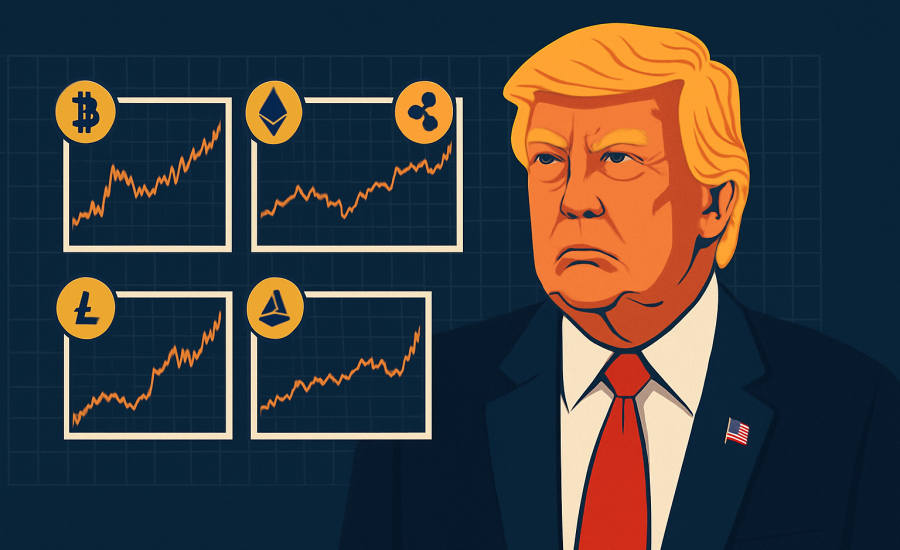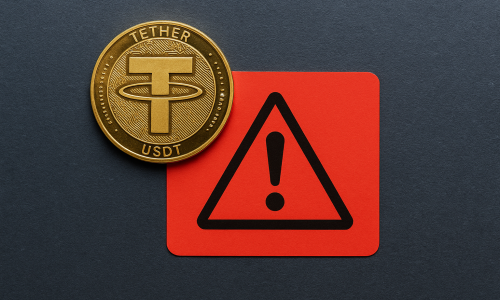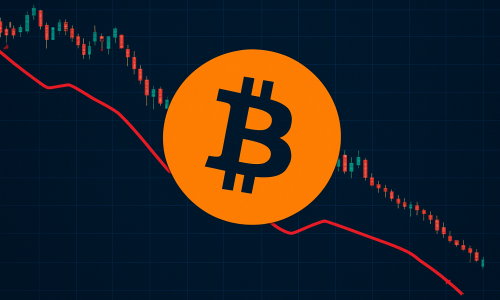Introduction
The return of Donald Trump to the White House has already proven to be a seismic event for the global financial system—and perhaps nowhere is that more evident than in the crypto markets. Within the first 100 days of his presidency, President Trump has made several policy announcements, strategic appointments, and economic declarations that have deeply influenced the digital asset landscape. Unlike his previous term, this presidency has seen an overt alignment between political rhetoric and crypto market reactions, especially given Trump’s more engaged stance on Bitcoin and regulatory reform.
To understand the full picture, it’s essential to zoom in on the five key crypto charts that have come to symbolize this turbulent yet opportunity-rich political phase. These charts offer not just numbers and lines but a narrative of fear, speculation, bullish optimism, and institutional interest, all unfolding under a Trump-led administration.
1. Bitcoin Price Chart: Volatility Amid Policy Shocks
Perhaps the most telling chart during Trump’s early term is Bitcoin’s price trajectory. Since inauguration day, BTC has danced between $76,000 and $93,000, marking unprecedented intraday swings. These fluctuations are largely linked to Trump’s strong stance on American-made innovation, including favorable taxation policies for digital asset companies headquartered in the U.S.
Notably, the Bitcoin market experienced a sharp 6% spike immediately after Trump hinted at easing restrictions on crypto ETFs. This was followed by a brief 12% decline when tariffs on Chinese hardware components were announced—triggering investor concerns about mining equipment costs.
Beyond price, trading volume also increased by 32% during this period, reflecting increased retail participation as well as strategic accumulation by whales anticipating long-term regulatory clarity.
2. Ethereum Gas Fees And Layer-2 Scaling Metrics
Trump’s tech policy pivot has indirectly influenced Ethereum’s network activity. One of the most telling trends has been the fluctuation in Ethereum gas fees and the increased usage of Layer-2 solutions like Arbitrum and Optimism.
Shortly after Trump’s executive order requesting the SEC to expedite approval on Layer-2 based DeFi applications, Ethereum transaction counts surged by over 45%, creating network congestion and temporarily hiking gas fees by 80%.
However, the demand didn’t vanish. Instead, it migrated—leading to an 88% increase in transactions on Arbitrum and a 60% jump in Optimism usage. These scaling metrics suggest that Trump’s administration may unintentionally be accelerating Ethereum’s transition toward a high-throughput ecosystem.
3. Trading Volume On U.S.-Based Exchanges: Institutional Rebound
One of the strongest signals of institutional sentiment during Trump’s opening phase is visible in the trading volume on platforms like Coinbase and Kraken. These exchanges saw a 41% increase in weekly trade volume after Trump reiterated his intent to build a “crypto fortress” within U.S. borders.
Key institutional players—such as BlackRock, Ark Invest, and Fidelity—began scaling their exposure to digital assets once Trump-appointed regulators began reversing hostile policies introduced during the previous administration.
4. Stablecoin Supply Distribution: USDC And CBDC Clash
While many expected Trump to oppose stablecoins, the charts tell a more nuanced story. Since his inauguration, USDC supply has grown by over $9 billion—while Tether (USDT) remained relatively flat. This discrepancy aligns with Trump’s stated preference for “domestically accountable” assets, and a chilling effect on offshore-issued coins.
More interestingly, the U.S. Treasury’s newly announced collaboration with Circle for a digitized treasury bond protocol has added legitimacy to USDC. Trump’s administration appears to be leveraging stablecoins without endorsing a centralized digital dollar—a stark contrast to the pro-CBDC stance of global counterparts like China or the EU.
This shift is clearly visible in the supply chart, where USDC begins to sharply outpace USDT for the first time in over two years.
5. Altcoin Sentiment Index: Meme Coins And Political Branding
The fifth chart doesn’t just reflect market behavior—it mirrors cultural sentiment. The Altcoin Sentiment Index, an aggregation of Reddit, X (formerly Twitter), and Discord engagement, shows a dramatic rise in interest around politically branded tokens like TRUMP and WLFI.
These meme coins saw a 300% surge in mentions and over 700% in price volatility, following campaign-style messaging that Trump supports decentralized finance as a “citizen-powered economy.”
But it’s not just hot air. WLFI (World Liberty Financial Inc.), a Trump-backed digital token project, reported over $1.2 billion in market cap within three weeks, making it one of the fastest-growing politically affiliated cryptocurrencies in history.
This data points to a rising intersection between political allegiance and investment behavior—a trend that could dominate the next election cycle.
Trump’s Strategic Appointments: SEC, CFTC And The Crypto Renaissance
Beyond charts, one cannot ignore the structural foundations being laid. Trump’s new SEC chairman, a former blockchain investment executive, has vowed to eliminate “punitive ambiguity.” Meanwhile, the CFTC has ramped up spot-market surveillance but promised fairer treatment for derivatives-based tokens.
These appointments are already reverberating through the market. The fear of unpredictable enforcement that once suppressed growth is giving way to cautious optimism, especially in sectors like DeFi, tokenized securities, and real-world asset platforms.
Regulatory Realignment: A New Age Of Pro-Crypto Policymaking
One of the Trump administration’s defining crypto moves so far has been the reversal of FinCEN’s “self-custody wallet” monitoring rule. The rollback is widely viewed as a massive win for privacy advocates and libertarian-leaning investors.
Simultaneously, Congress has pushed forward the Digital Innovation and Transparency Act, which proposes a unified taxonomy for digital assets—finally distinguishing between commodities and securities.
This regulatory clarity is fueling price recoveries, new product launches, and a flurry of venture capital activity that had dried up in previous quarters.
Conclusion
In just 100 days, President Trump has ushered in one of the most dynamic phases in crypto history. These five charts—tracking Bitcoin volatility, Ethereum’s scalability stress, stablecoin usage shifts, institutional volume growth, and meme coin sentiment—collectively narrate a story of change, speculation, and opportunity.
It’s not just Trump’s words, but how the markets respond to them, that’s redefining this chapter of the crypto journey. Whether this momentum holds or crumbles under future regulation or political shifts remains to be seen. For now, the charts don’t lie: Trump’s presidency is crypto’s new frontier.



